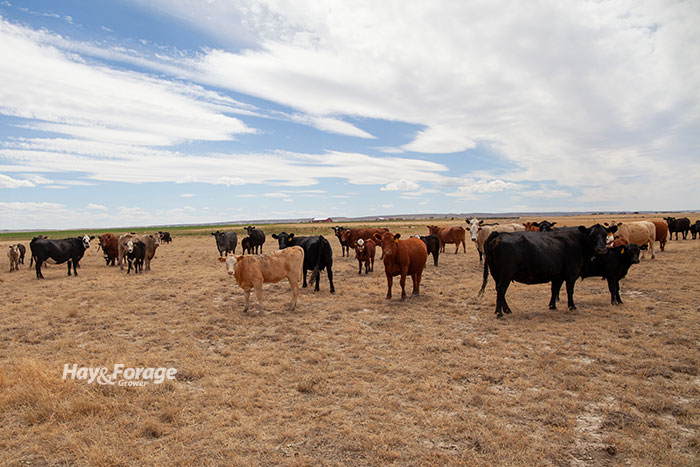
Making a drought management plan months before the grazing season begins is like having a head start in a race; however, it’s not too late to step up to the starting line. Farmers can still hit the ground running with strategies to mitigate drought damage and promote better regrowth and pasture recovery.
Rest periods are key to pasture recovery, but they are just one piece of a larger puzzle. Chris Teutsch, a forage specialist with the University of Kentucky and based at its Research and Education Center in Princeton, says incorporating legumes into a stand, planting warm-season species, and feeding hay and other supplements are other ways to alleviate some of the pressure off primary forages to meet all grazing needs. Weaning calves and selling cows sooner rather than later can also have a positive effect on pasture recovery and profitability.
Every operation will have a unique approach to drought management depending on their available resources and production goals. Even so, Teutsch recommends combining individual strategies to make drought management more effective now and in future years.
Implement rotational grazing. Forage in a rotational grazing system tends to resist drought longer and bounce back faster than plants that are continuously grazed. “The reason for this is that rotationally grazed plants have larger and healthier root systems that can go deeper into the soil for water,” Teutsch explains.
Additionally, moving cattle from a portion of pasture when plants are 4 to 5 inches tall helps maintain a moderate microclimate near the soil surface. This temperature regulation can reduce evaporation and keep plant growing points cool.
Add legumes to the mix. Legumes offer multiple benefits to forage stands and the livestock grazing them, from fixing nitrogen in the soil to diluting the effects of toxic fescue to improving overall forage quality. Above all, legume taproots can reach water deep in the soil profile that might not be available to shallow, fibrous grass roots during drought.
Not all legumes can easily be incorporated into existing forage stands. For example, sericea lespedeza is a perennial warm-season legume that is extremely drought tolerant yet has poor seedling vigor.
Alfalfa is also difficult to establish in grass pastures, and it requires well-drained soils with high fertility to survive and thrive. Red clover, on the other hand, has high seedling vigor and is commonly frost seeded into forage stands in late winter or early spring.
Plant warm-season species. “During the summer months, warm-season grasses will produce about twice as much dry matter per unit of water used when compared to cool-season grasses,” Teutsch asserts.
Annual warm-season species like sorghum, sorghum-sudangrass, sudangrass, and pearl millet can bring life back to grazing systems during the summer slump, and they make good transition crops during pasture renovation. One disadvantage to warm-season annuals is that they must be reseeded every year, which elevates input costs and heightens the risk of stand failure.
Perennial warm-season grasses may have more merit in long-term stands. Bermudagrass, little bluestem, Indiangrass, and switchgrass are some of the primary species in Teutsch’s home state of Kentucky. He notes these native grasses — especially bermudagrass — require more meticulous grazing management and fertilization to achieve their production potential.
Feed hay and other commodities. One goal of grazing livestock may be to minimize feed costs, but buying hay will likely become necessary during drought. Do so before pastures become overgrazed and designate a sacrifice paddock for hay feeding to limit heavy hoof traffic to a smaller part of a pasture.
Other commodities like corn gluten and soybean hulls can supplement livestock diets during drought as well. In addition to navigating commodity markets, major considerations of these feedstuffs include storage, handling, and feeding practices. “The ability to get and store commodities and efficiently feed them is critical if they are going to be a key component in your drought management strategy,” Teutsch adds.
Adjust stocking density. Weaning and selling calves early reduces the number of grazing animals in a pasture. It also lessens the nutritional requirements of cows in the herd, thus lowering total forage intake of these animals.
Culling cows is usually the last resort in a drought management plan, but doing so can also ease stress on pasture plants. Similar to selling calves, aim to sell cows as soon as possible to promise better returns if market prices drop as drought conditions continue.
No matter which strategies suit a specific situation, Teutsch urges farmers to provide ample clean water for livestock. “During drought, the water requirement of livestock increases due to higher temperatures and the consumption of dry forage material and hay,” he states. “In addition, naturally occurring water sources, such as ponds, streams, springs, and seeps, often have limited water flow, so it is important to make sure livestock have unfettered access to clean water.”

